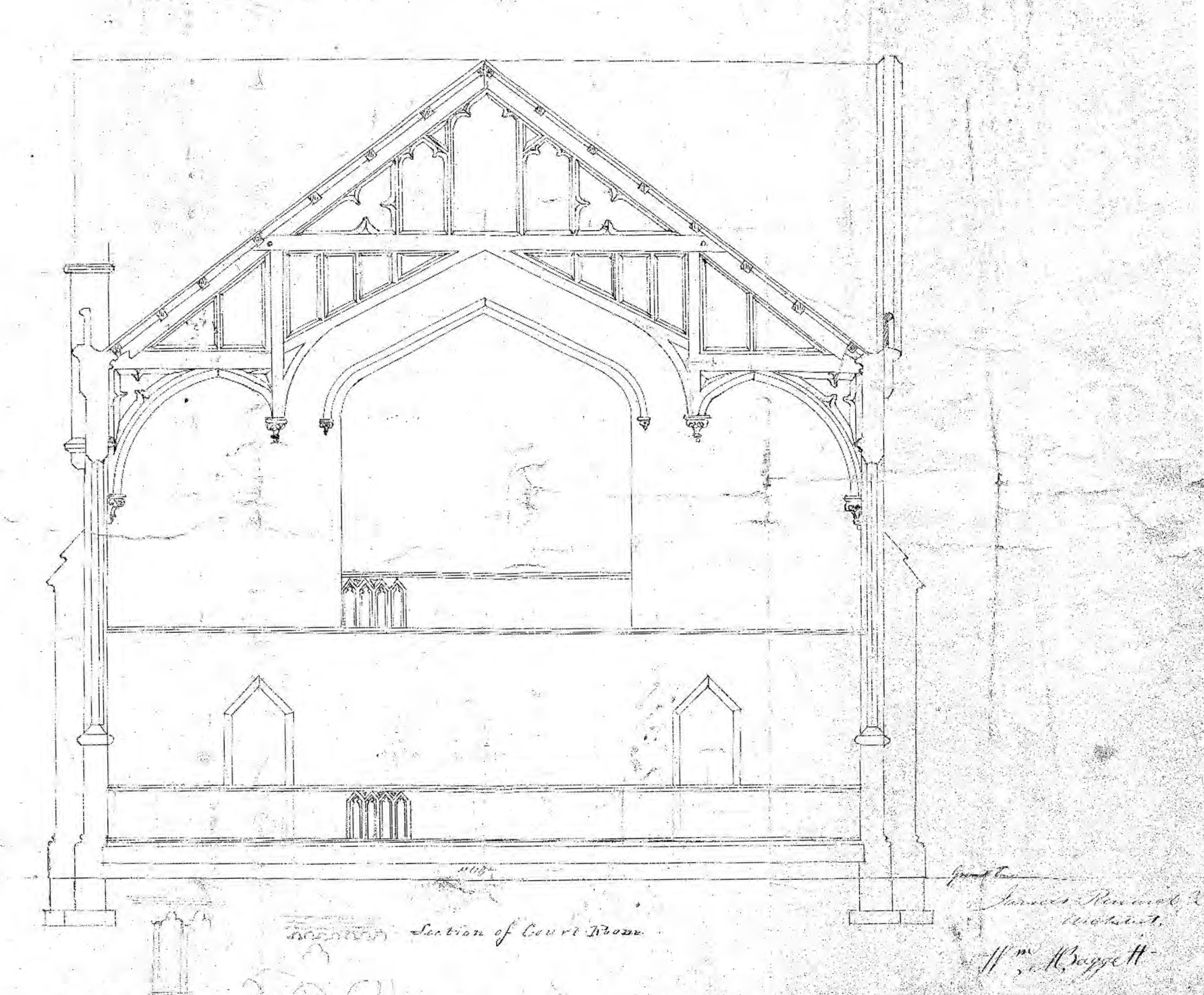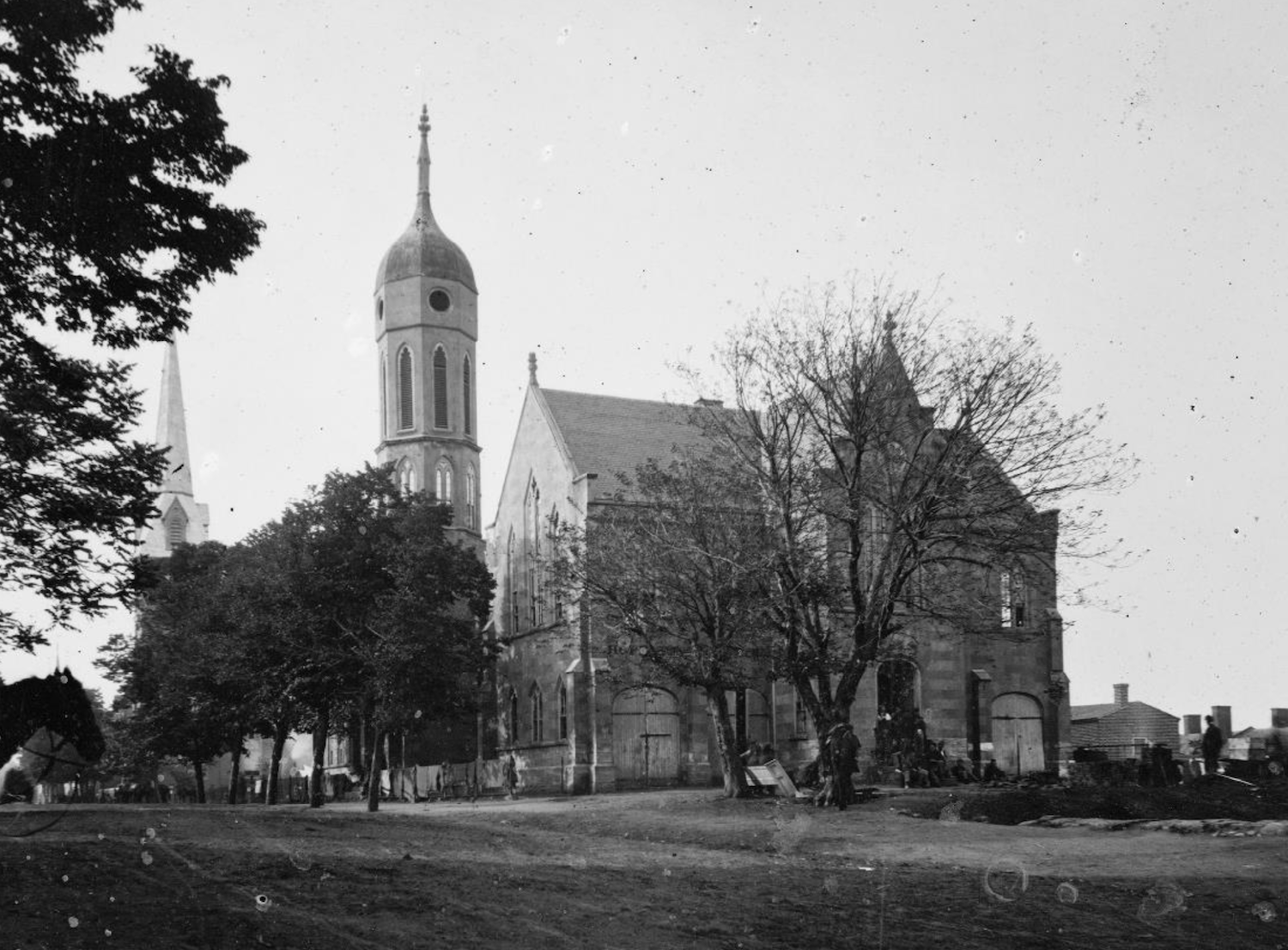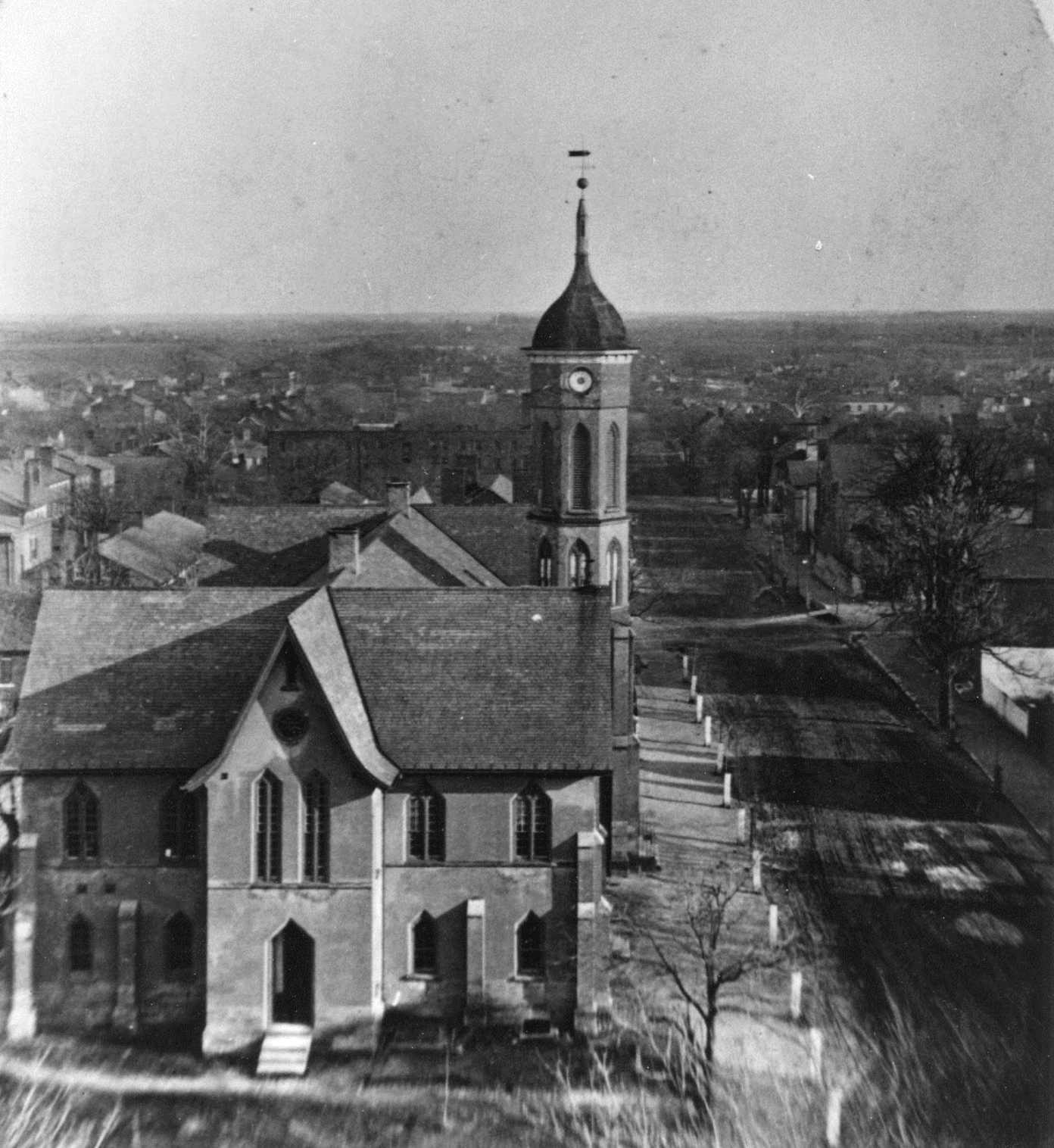The Renwick Courthouse was designed by James Renwick, Jr. and constructed by contractor William Baggett of Fredericksburg in 1852. It is a two-story, stucco-clad, Gothic Revival building featuring a cross-gabled roof and a central bell tower. According to the contract signed by City Council in 1851, the new courthouse would be erected at the cost of $13,850.
As originally designed, the north wing contained the clerk's office and three jury rooms, the center section was a double-height courtroom, and the south wing contained the Hope Fire Company and the Mayor's office. The courthouse played a key role in the Civil War, serving as a Confederate barracks and field hospital, as well as a signal flag station during the Battle of Fredericksburg. In the war's aftermath, the Freedman's Bureau Court met there to provide relief for formerly enslaved people. Later, in the 1880s, congregants of the Shiloh Baptist Church assembled at Renwick before their relocating to their current sites. Throughout the decades, Renwick has housed many other civic community functions, including a school, a library, and an armory.
Fredericksburg considered the construction of a new courthouse in the mid-1940s, but decided instead to remodel the existing building. City Council hired J. Binford Walford and the Thorington Construction Company, both of Richmond, to conduct the work. The most significant alteration was the addition of the second floor in the courtroom area. This work was completed in 1948 at the cost of $113,000 ($1.4 million adjusted for inflation) plus additional expenses for furnishings and architectural fees.
In 1990, City Council approved another $1 million ($2.3 million adjusted for inflation) renovation of the courthouse by James O. McGhee Architects of Fredericksburg. Many improvements were made to the courtroom, clerk's office, and other public areas, including the addition of an elevator to make the second story ADA accessible.
In the early 2010s, City Council approved the construction of a new courthouse at the cost of $35 million dollars, the largest capital expenditure that Fredericksburg had ever undertaken. Upon completion in 2014, court functions were transferred to the new building located just one block over on Princess Anne Street. Though the Renwick building would no longer be used for court purposes, it has remained in light usage for administrative and police offices, overflow equipment storage, and community meetings. In 2017, City Manager Tim Baroody formed an agreement with Rev. Joe Hensley to allow the neighboring St. George's Episcopal Church to lease the first floor of Renwick for their school programming at a rate of $500 per month, an occupation which continued for several years.
Several studies of Renwick campus—including the main courthouse, the adjacent Wallace Library built in 1909, and the Old Jail built in 1928—have been commissioned since the court was moved, including a historic structures report by Commonwealth Architects in 2016 and an economic feasibility study by Frazier Associates in 2019. The latter analyzed several adaptive reuse projects that would be appropriate for the site, economically sustainable, and responsive to community needs. The potential projects that met all criteria included a boutique hotel, a performing arts center, and an office space. In any case, Frazier strongly recommended that the city retain public ownership of the building, stating, "The Renwick Courthouse is arguably the most architecturally significant building in downtown Fredericksburg … We therefore recommend that the City retain ownership of these three buildings—or, in order of magnitude, that it retain ownership of the Renwick Courthouse, then the Wallace Library, then the jail."


